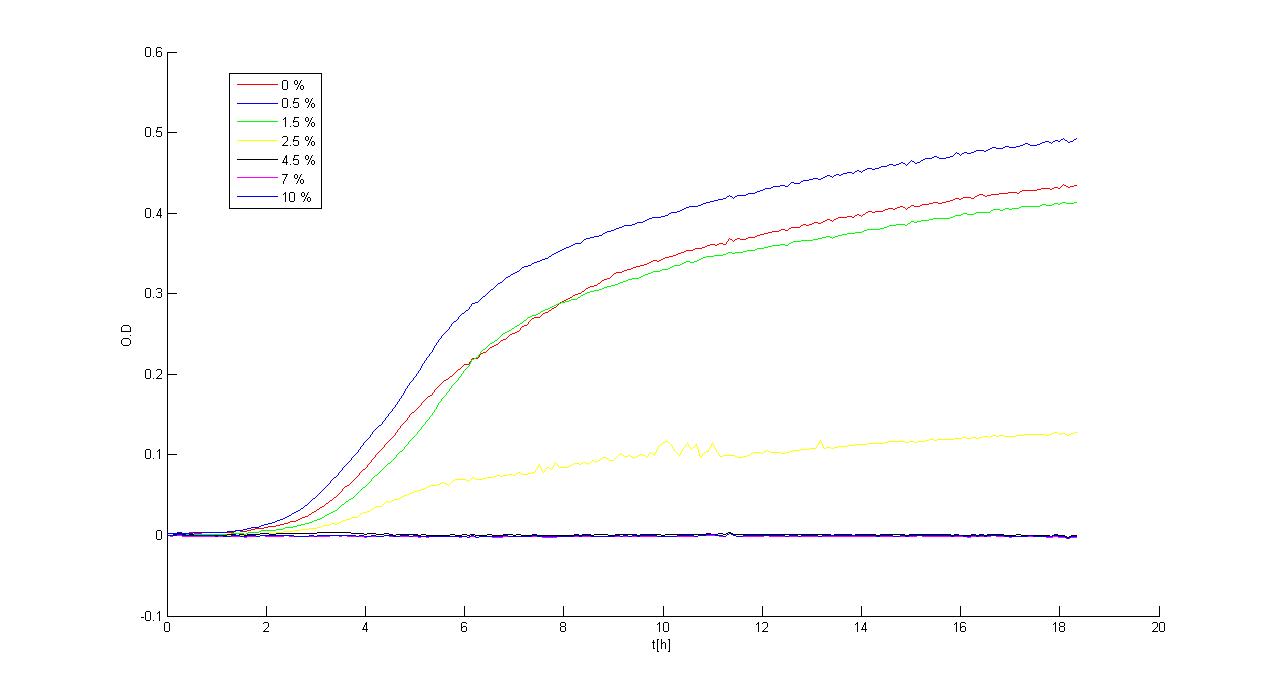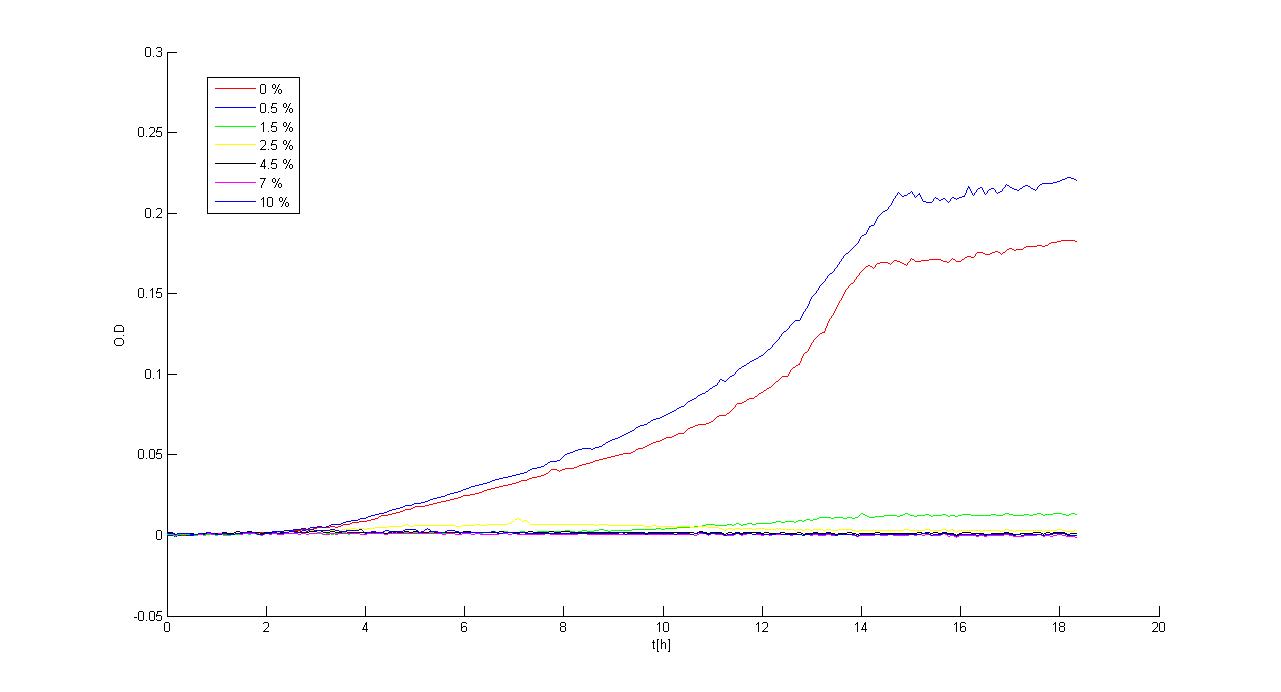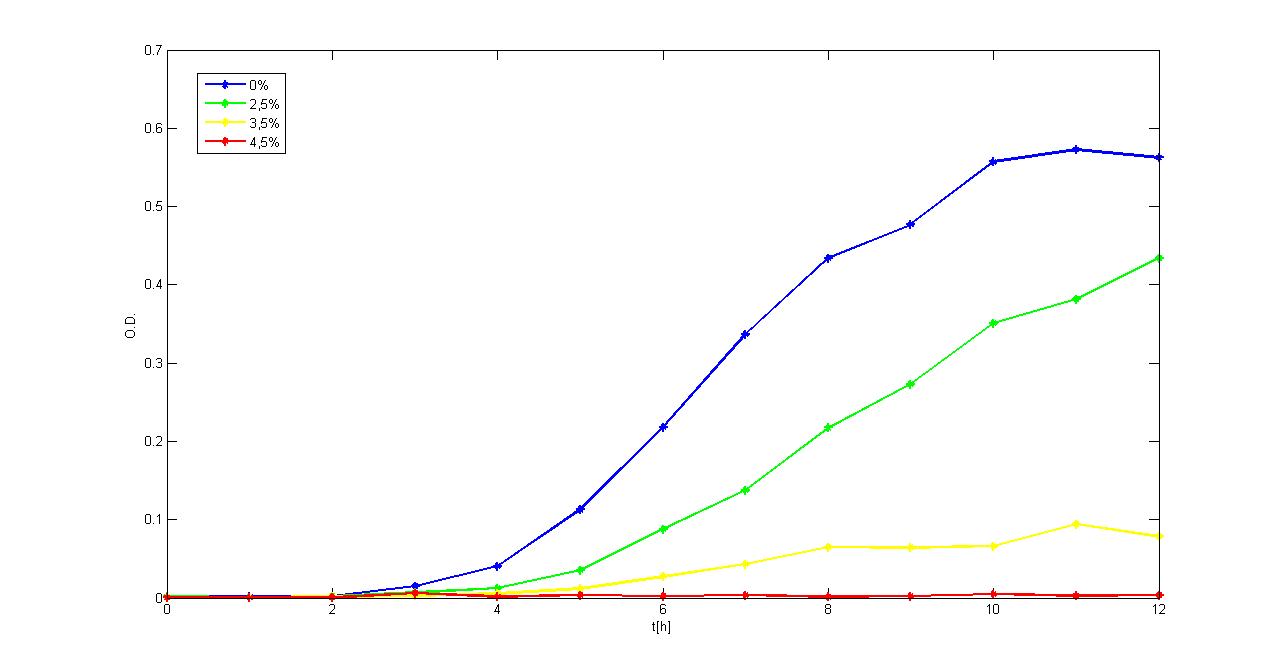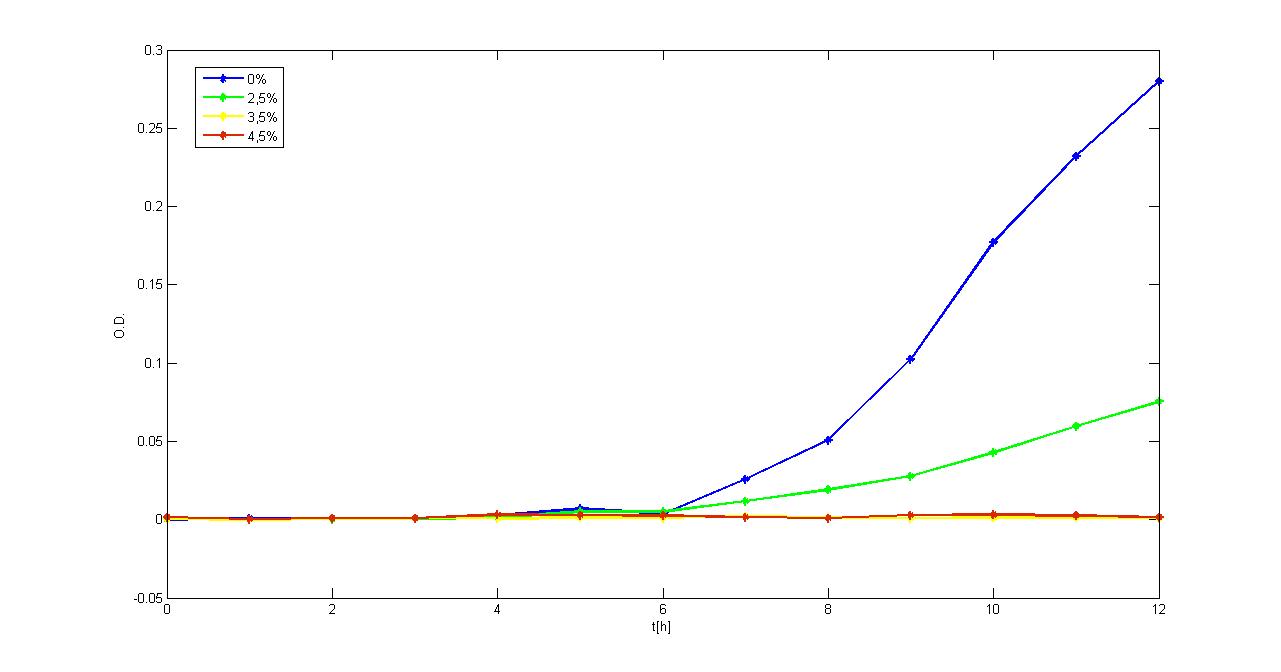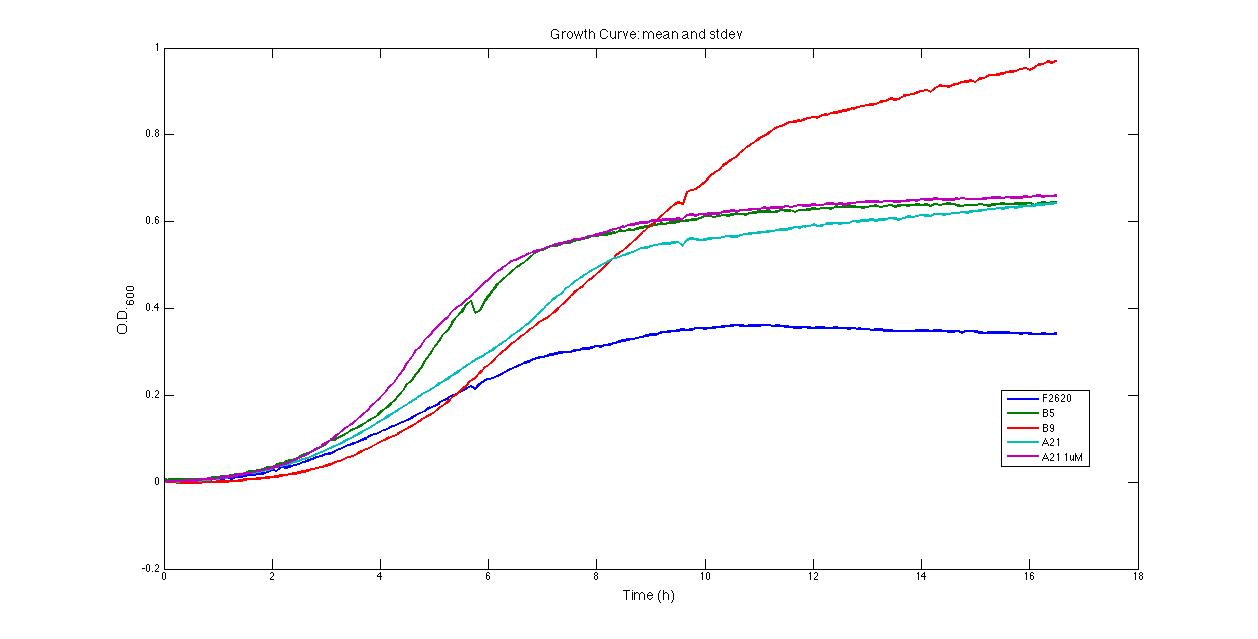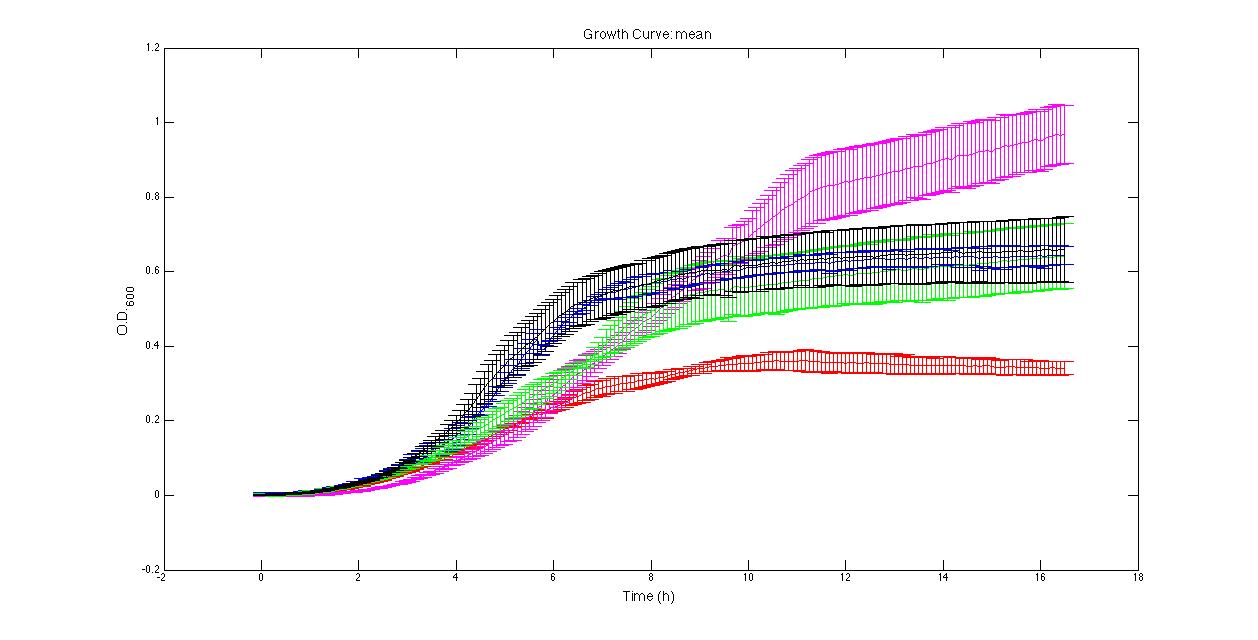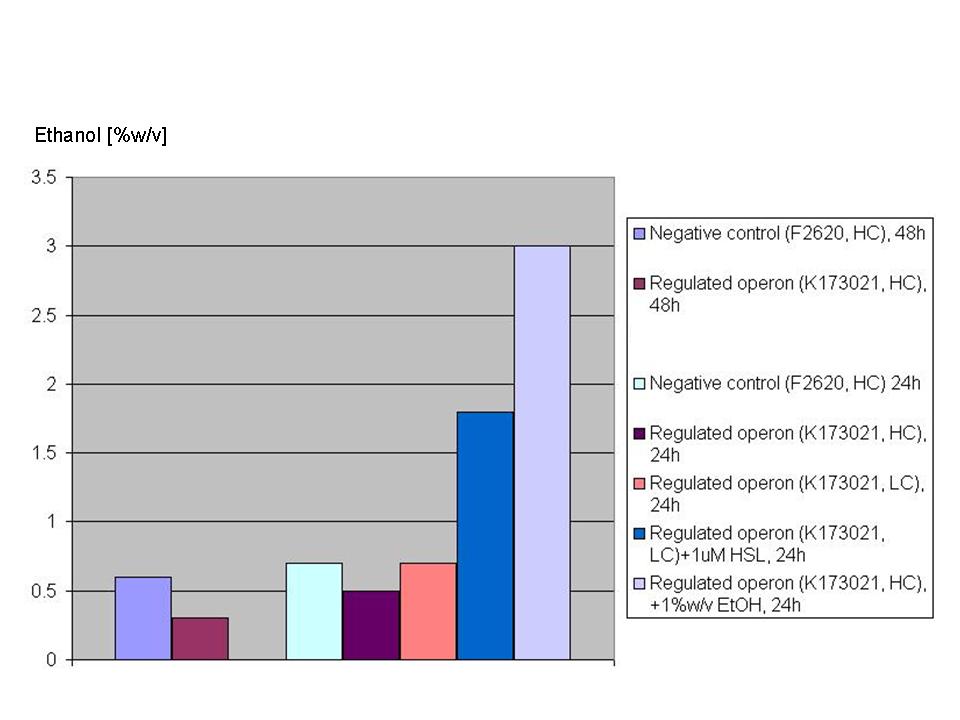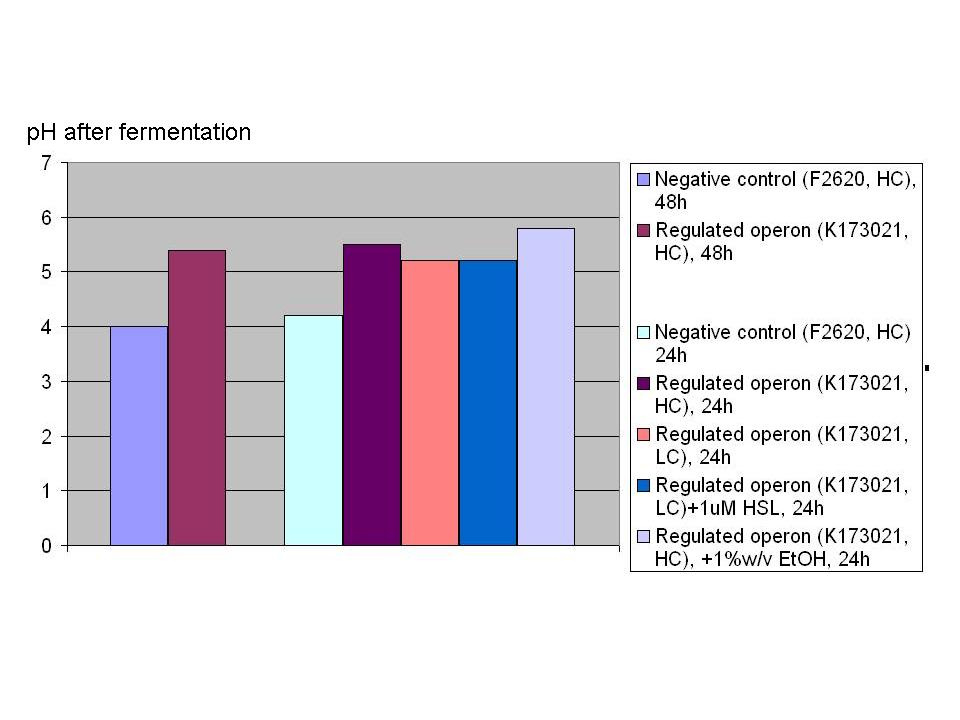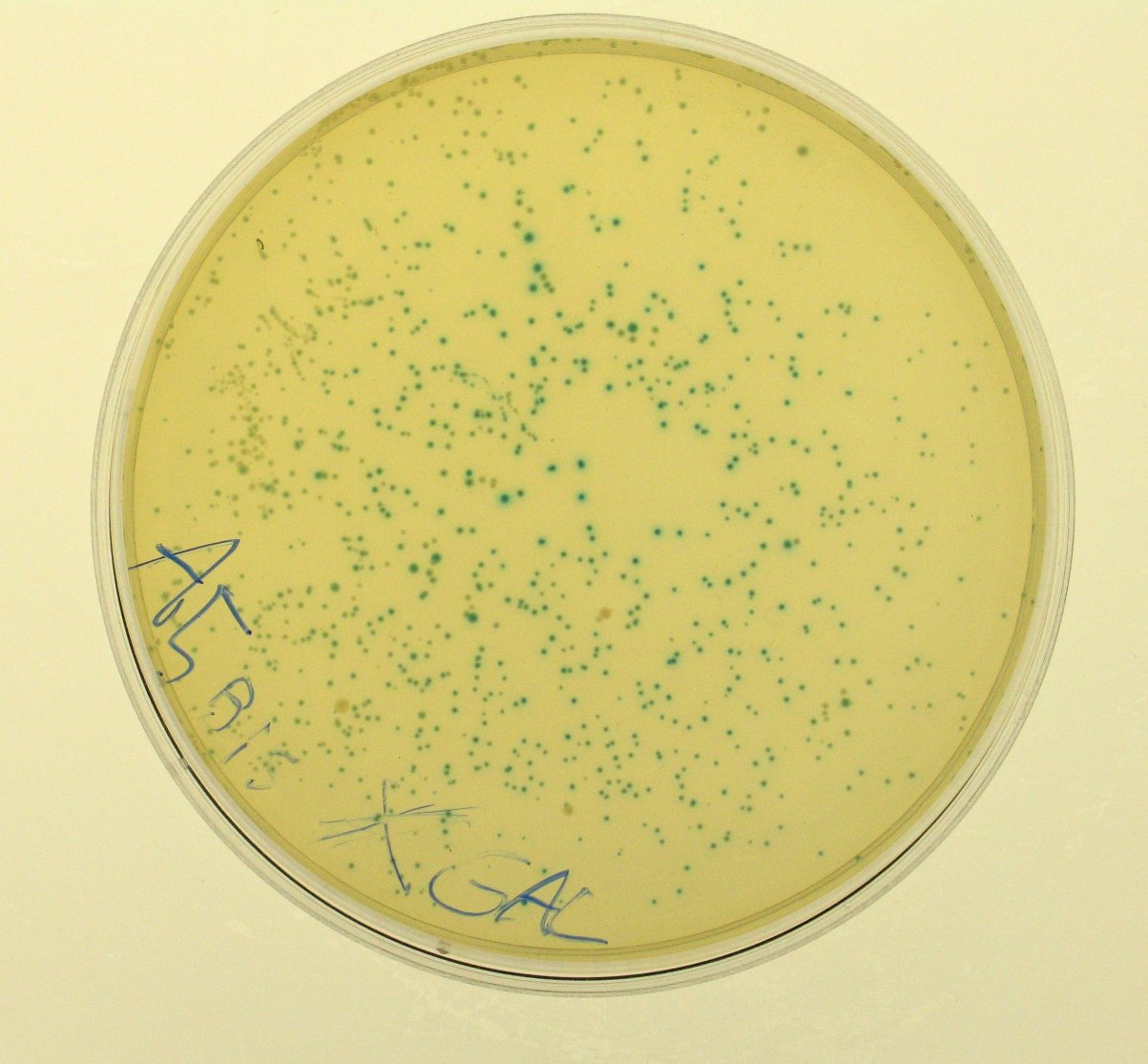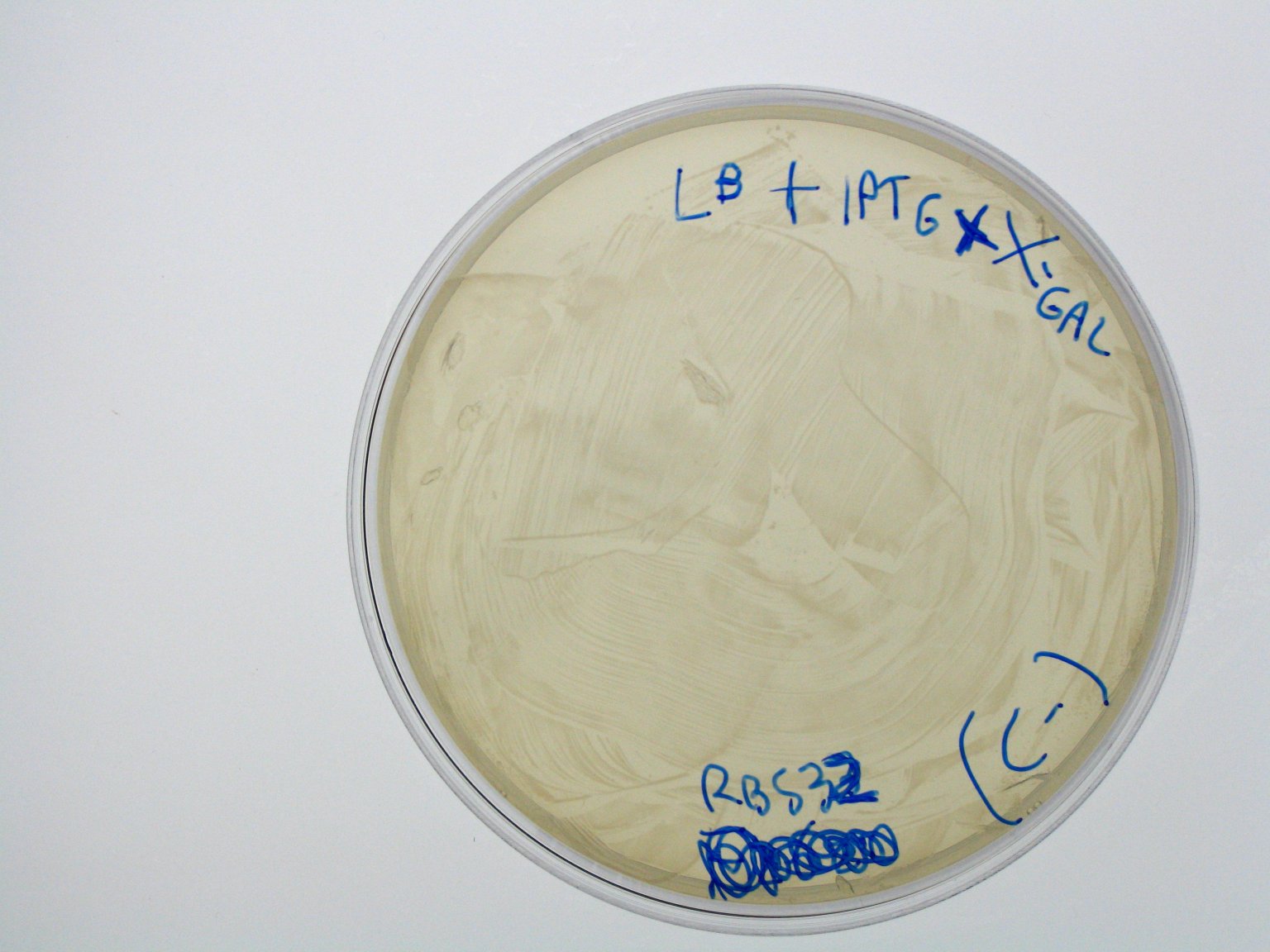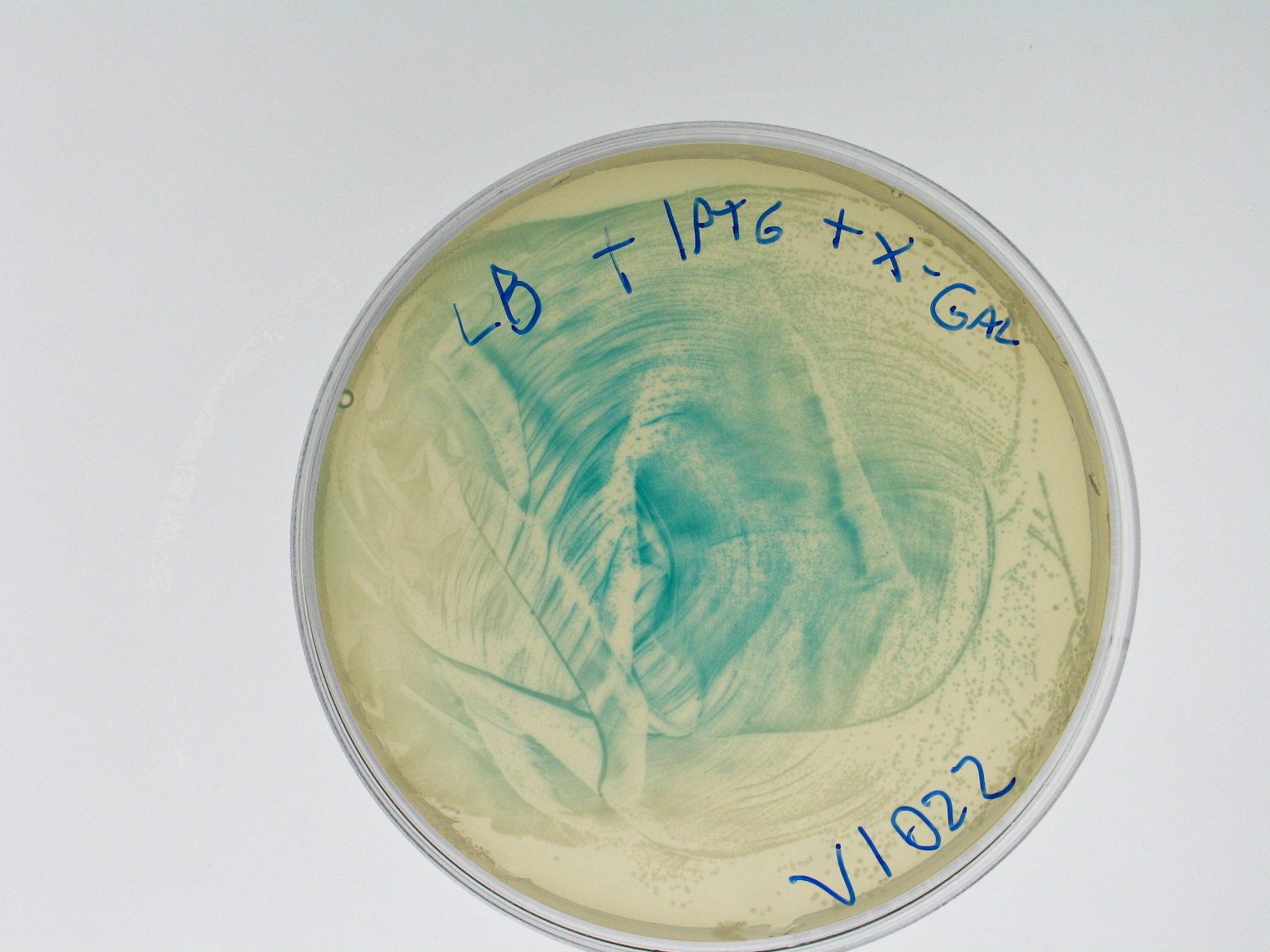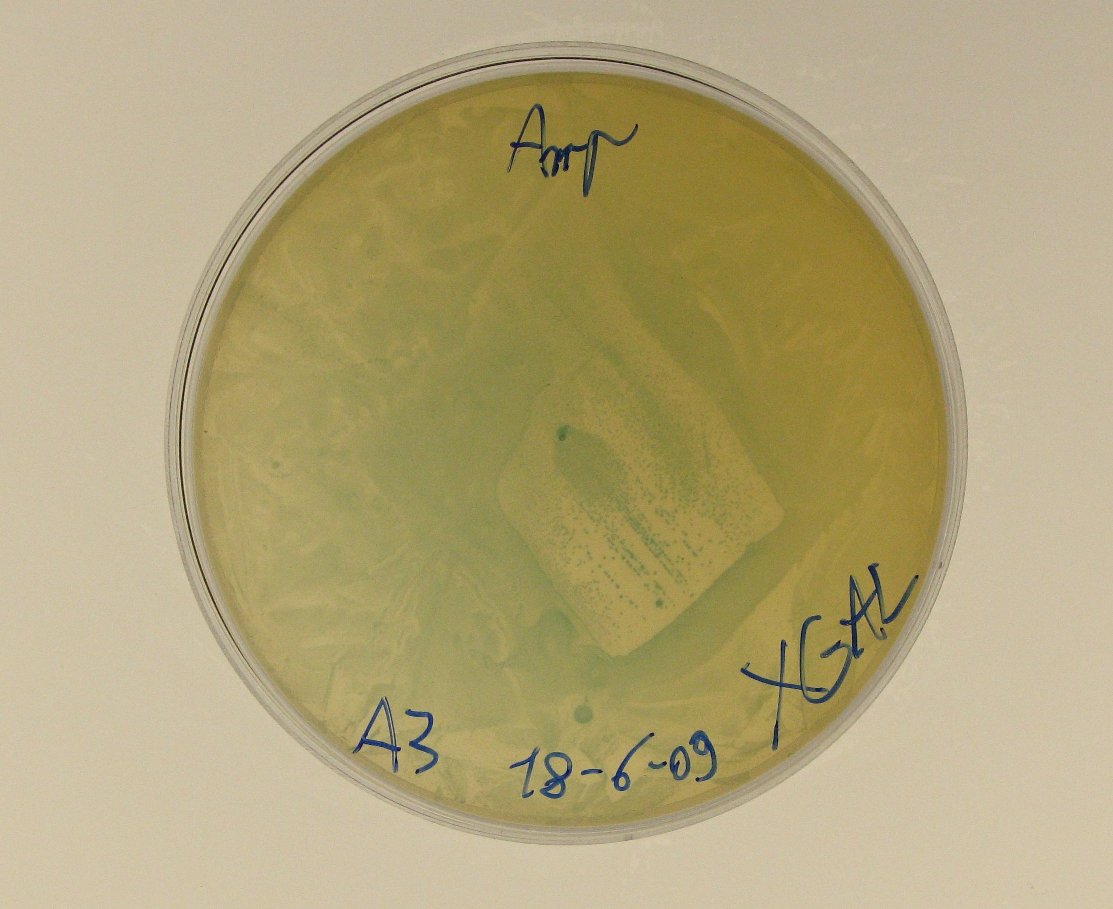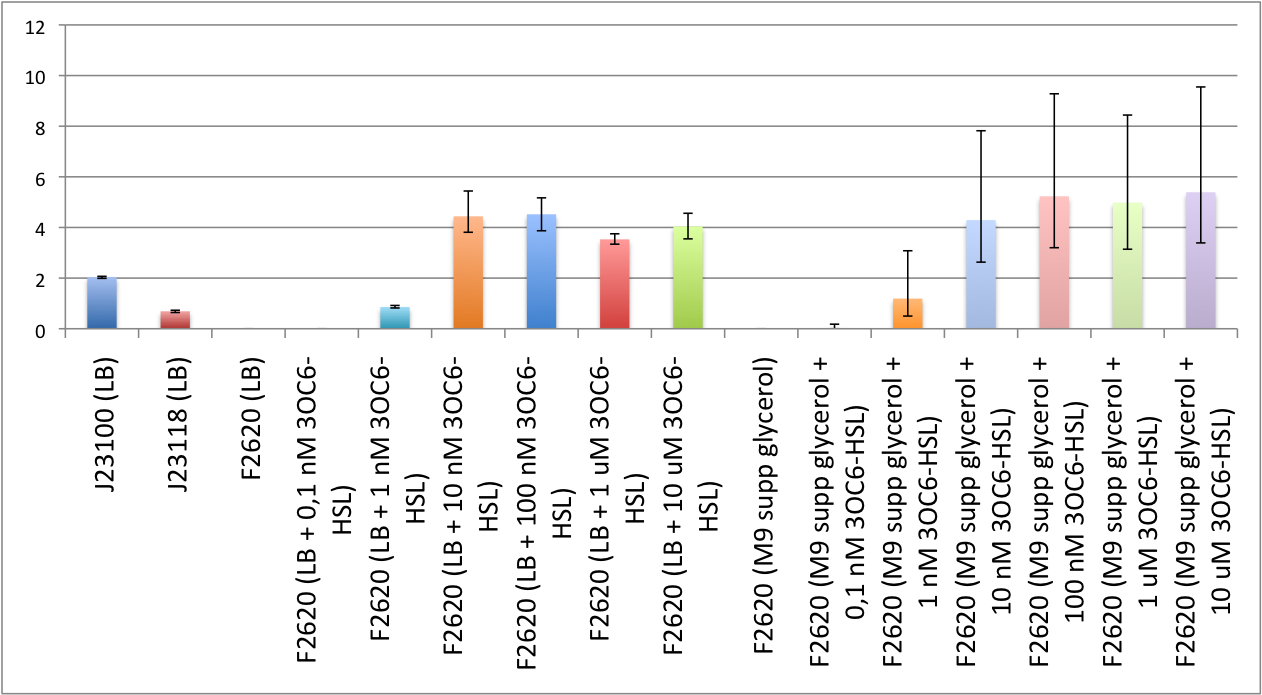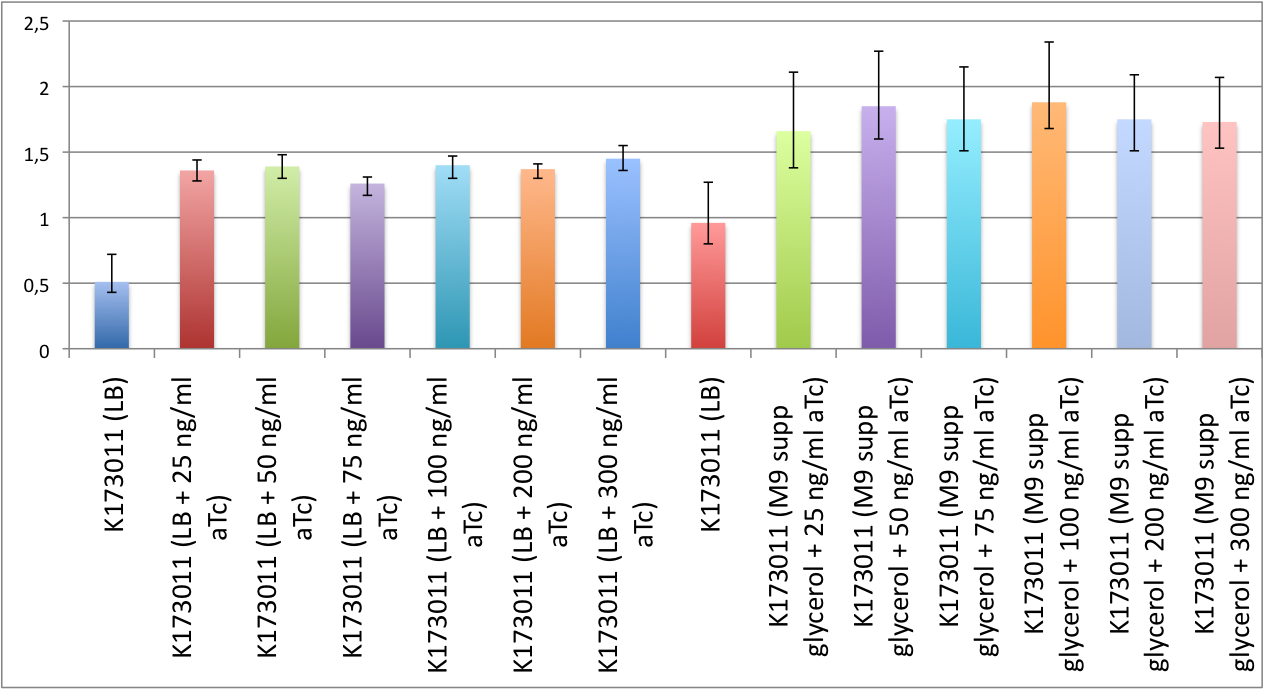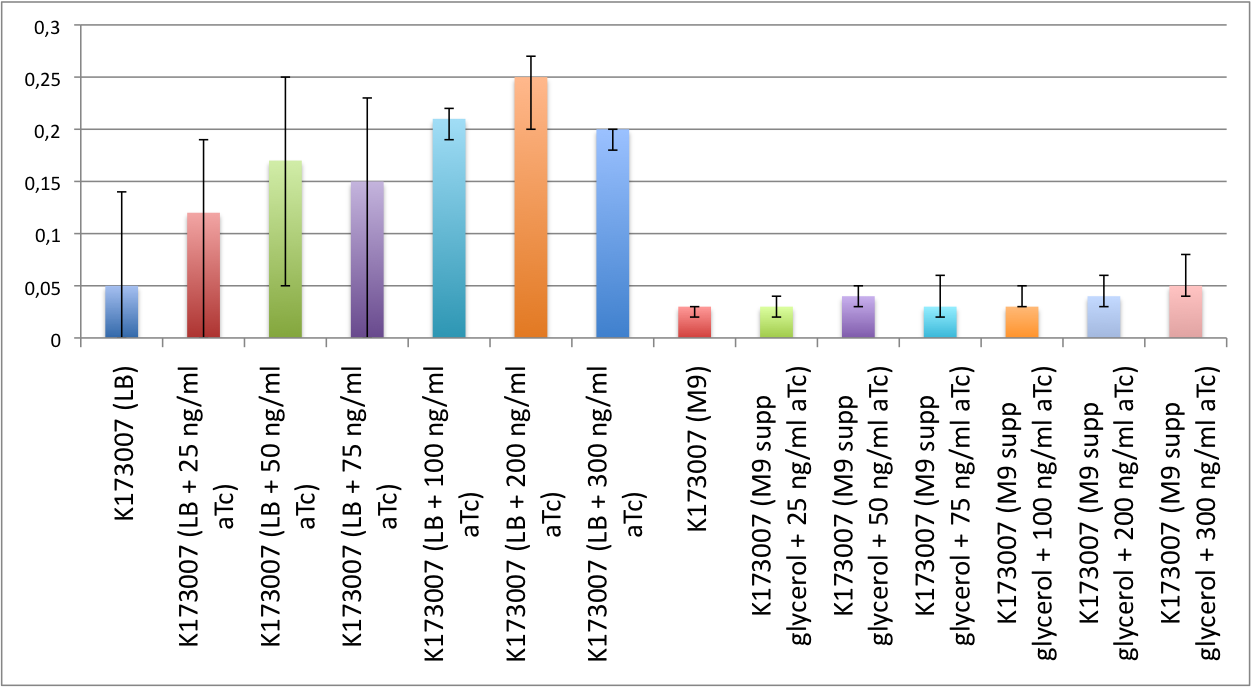Team:UNIPV-Pavia/Project/Results
From 2009.igem.org

|
|
|
Results & Conclusions |
|||||||||||||||
|
Experimental resultsIn this section a summary of "Ethanol? Whey not!" detailed results is reported. For more information you can visit Parts Characterization section, in which you can find a documentation for each every BioBrick involved in this project. Ethanol fermentationSurvival of E. coli TOP10 in ethanolDifferent concentrations of ethanol have been added to M9 supplemented with glycerol and LB selective media (+ Amp) and E. coli TOP10 (bearing BBa_B0015 BioBrick) survival, when grown in a microplate reader (37°C, automatic protocol) and in a 50 ml falcon tube (30 ml of culture, 37°C, 220 rpm), has been tested. Of the concentrations we tested, in the microplate reader bacteria can grow at concentrations up to 2.5%w/v (LB) and 1.5%w/v (M9), while in the 50 ml falcon tube they can grow at concentrations up to 3.5%w/v (LB) and 2.5%w/v (M9). In general, in the falcon tube bacteria grow better than in the microplate (see Measurement section for details) and this is confirmed by these data: it seems that the toxicity threshold concentration of ethanol is higher for growth in falcon tube than in the microplate (for example, at 2.5%w/v in M9, bacteria can survive in the falcon tube, but not in the microplate). Ethanol productionA synthetic ethanol-producing operon () has been built up by our team and has been assembled downstream of several promoters or devices:
These strain's most important phenotype qualitative characteristics can be summarized as follows:
All the other details can be found on Parts Characterization page, as well as in Registry page. Comments: The growth results of strains bearing a regulated ethanol-producing operon confirm the metabolic burden given by this BioBrick when gene expression is triggered: induced strains bearing a high copy plasmid containing BBa_K173021 do not survive, while low copy ones can survive even at high induction (1 uM 3OC6-HSL). In all the presented experiments, we decided to exploit the lux promoter leakage activity for BBa_K173021 in pSB1AK3 (high copy), while we decided to induce BBa_K173021 in pSB4C5 (low copy) the with 1 uM of 3OC6-HSL.
1 - Growth of strains bearing:
has been monitored in selective LB + 10% glucose starting from an inoculum in the microplate reader (figure below). 2 - Ethanol fermentation capability of these strains in 10%w/v glucose-supplemented LB medium has been tested with three different fermentation protocols (see [Fermentation experiments] for a detailed description). The main fermentation results can be summarized with the following par plots. Ethanol and pH have been measured after 48 hours (PROTOCOL#2, first two measurements) or 24 hours ([PROTOCOL#3], other measurements). Comments: The pH results suggest that in strains bearing expressed pdc and adhB the fermentation does not give high levels of organic acids as in negative control strains which do not have pdc and adhB. It is surprising that the pH of BBa_K173003 in pSB1AK3 (pdc and adhB without any promoter) is higher than in the negative control. This could be due to a weak spurious transcription of pdc and adhB, amplified by the high copy number plasmid. This may re-direct part of pyruvate metabolism to ethanol and not to organic acids. Of course this phenomenon should be further investigated. The results about dynamic growth (in terms of OD600) are in accordance with the pH results, confirming that strains bearing BBa_K173021 in pSB1AK3 produce less organic acids than the negative controls, hopefully thanks to pdc and adhB which re-direct the metabolism of pyruvate from organic acids to ethanol, and consequently grow better. No significant difference was noticed in the growth of promoterless operon, uninduced and induced BBa_K173021 in pSB4C5, suggesting that in promoterless operon transcription could be activated in unspecific manner (i.e. without a promoter upstream). Fermentation results showed that strains bearing expressed pdc and adhB in pSB1AK3 high copy plasmid can produce less ethanol than the negative controls in both PROTOCOL#2 and PROTOCOL#3. Our hypothesis is that in our working conditions adhB converts part of the fermented ethanol back to acetaldehyde, in fact this enzyme is able to perform both acetaldehyde conversion to ethanol and the opposite reaction. On the other hand, if we add 1%w/v of ethanol in the medium this strain can ferment 30 g/l of ethanol, which is about 60% of theoretical yield. This may be due to adhB behaviour, which was reported in literature to be activated by ethanol accumulation. Moreover, It is possible that when starting from less than 1% of ethanol in fermentation medium ethanol production could be increased, because in our experiment the bacterial culture reached ethanol concentration survival threshold (40 g/l) and so it difficult to ferment more than 30 g/l. For all these reasons, we can say that we created two ethanol producing biological systems:
and found promising working conditions for them, even if a massive optimization work should be further completed. Lactose metabolismA bacterial beta-galactosidase protein generator () was assembled from the parts contained in the Registry, even if it had already been designed and submitted as , whose sequence was inconsistent according to iGEM QC. The enzyme, encoded by lacZ gene, cleaves lactose in glucose and galactose and can be used, properly assembled downstream of a regulatory module, to speed up the lactose metabolism. We used tetR promoter, contained in , to produce a constitutive expression of lacZ.
This qualitative result shows that:
Anyway, further comparative tests should be done in order to see if lactose cleavage can be performed faster than in wild type E. coli, after the choice of a suitable promoter which controls this protein generator. Promoter characterizationSeveral promoters and devices have been tested by our team during this summer. Our efforts have been focused on standard characterization methodologies, so we decided to try to apply the Relative Promoter Units (Kelly J. et al., 2008) concept to do this. Regulation of gene expression is very important for our project as we want to optimize the expression rate of two actuators, one for lactose conversion to glucose and one for ethanol production from glucose. In our case it essential do have a sort of "genetic regulators user's handbook", in which all the functional characteristics of promoters can be found and in which we can choose the suitable regulator for us. We dedicated a large part of our project in this direction and here we summarize the promoter strength measurements. In the following bar plot we report:
All these BioBrick parts or devices have been validated in Invitrogen TOP10 E. coli strain in pSB1A2 standard vector. Project conclusions and perspectives
|
 "
"

